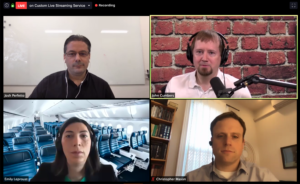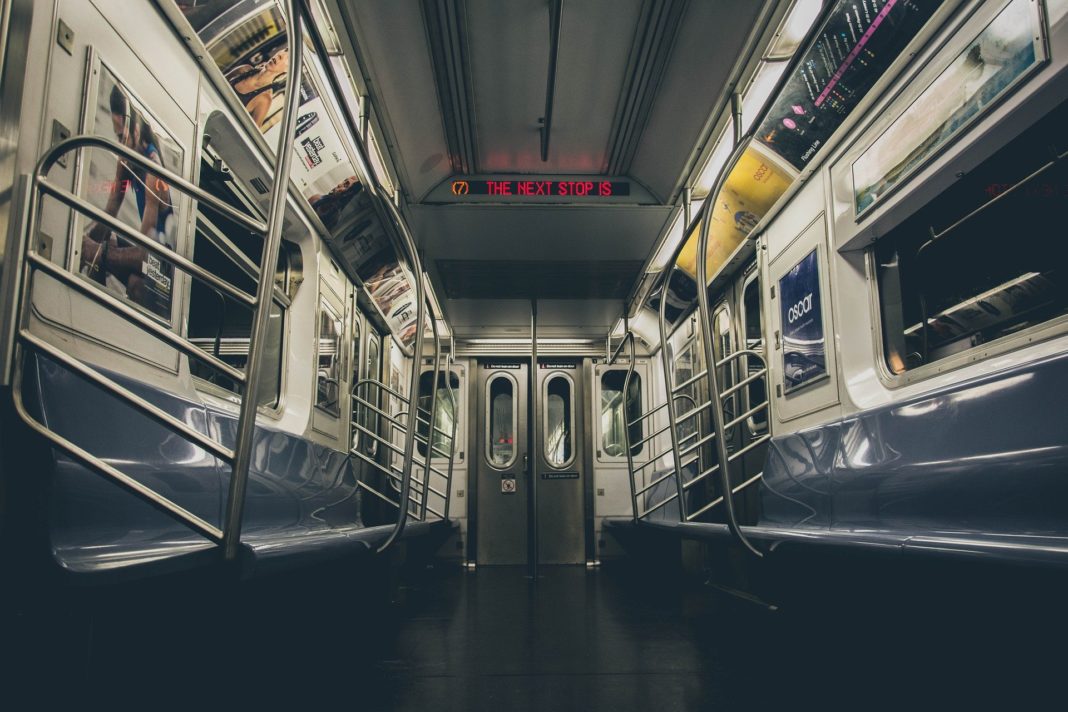For New Yorkers, signs of COVID-19 are everywhere: the near-constant sound of ambulance sirens, the otherwise unsettling empty avenues, and the white tents erected in Central Park that represent an emergency field hospital for COVID treatment. The presence of the SARS-CoV-2 virus has taken over the city. But is the virus actually everywhere? A team at Cornell Weill Medical School set out to answer that question. Specifically, they wanted to find out if the virus is present in one of the most crowded areas of the city—the NYC subway.
It all started with his daughter, noted Christopher Mason, PhD, associate professor at Cornell Weill Medical School. One day, when traveling on the subway, she did something that got Mason thinking. She licked the subway pole. After that, he explained, he “just got curious” and wanted to know what was there. His daughter’s taste for subway poles became the motivation for a research project that has grown into the MetaSUB (metagenomics of subways and urban biomes) International Consortium. Founded in 2015 by Mason and Ebrahim Afshinnekoo, who serves as the director of metagenomics, the large consortium normally performs sampling of cities during the summer, but have moved it up this year.

At a virtual town hall hosted by John Cumbers, founder of the synthetic biology network Synbiobeta, Mason (who appeared alongside Emily Leproust, CEO of Twist Bioscience and Josh Perfetto, founder and CEO of Chai Bio) asserted that “we are all in this nucleic acid soup together.” So, he asked, why not identify what is out there—in NYC and around the globe?
MetaSUB’s teams started swabbing for SARS-CoV-2 almost two months ago in pilot cities around the world. Those cities are Baltimore, Bangkok, Berlin, Buenos Aires, Daegu, Hong Kong, Kolkata, Warsaw, London, New York City, Oslo, Sao Paulo, Seattle, Singapore, Tokyo and Kanagawa-Prefecture, Washington, DC, and Zurich. The pilot included 1632 samples but they anticipate thousands of samples coming in over the next few weeks—projecting over 10,000 swab samples in the project, representing 59 cities, in 25 countries, on six continents.
So, is SARS-CoV-2 in the NYC subway? According to Mason, no. At least, they have not found any signs of it yet. However, they have only been swabbing since March 16th and have collected a small number of samples, with numbers ramping up quickly.
Subway swabbing
How does someone swab the NYC subway? In order to obtain the RNA samples, an Isohelix buccal swab is used to collect the sample, which is then stored in Zymo’s DNA/RNA shield to protect the RNA from degradation.
Like the clinical samples that are being processed at Cornell Weill Medical School, the subway samples go through six assays which can take anywhere from 20–30 minutes to up to three days. Mason attributes the large number of assays to the idea that this is (hopefully) a once in a century pandemic, and there is a lot to be learned from these samples. In turn, they are doing everything they can to “aliquot and preserve as much of the RNA from the sample and gain as much information as possible.”
A portion of the RNA (10 ng) goes into the standard qRT-PCR assay that is being widely used to detect the presence of the viral RNA. The RNA also goes into various different methods to sequence the viral genome, including PolyA RNA-seq (capturing of RNAs with polyA tails), Ribodepletion RNA-seq (removal of ribosomal RNAs), and MeRIP-Seq (which maps m6A-methylated RNA)—all of which are various methods to perform next-generation cDNA sequencing.
Direct RNA sequencing using Oxford Nanopore’s MinION is also performed. In order to do this, 500 ng (a lot) of polyadenylated RNA is required. The SARS-CoV-2 RNA genome, luckily, has a 33 nucleotide poly-A tail, so it can be sequenced directly.
The Loop-mediated isothermal amplification (LAMP) assay, a colorimetric assay that works in 30 minutes to test for the presence of the virus, is also performed on the samples. First published by a Japanese group in 2014, and commercialized by New England Biolabs, Mason asserts that this very quick and easy to read test may allow them to set up quick testing pop-up labs to test people quickly, easily, and rapidly. For these assays, the viral RNA positive control is provided by the DNA writing company Twist Biosciences.
The sequencing data is uploaded into GISAID (Global Initiative on Sharing All Influenza Data) which is a public–private partnership that provides public access to the genetic sequence data of influenza viruses and other viruses, including SARS-CoV-2.
So, what RNA is strap-hanging under the streets of NYC? The team found 10% human RNA and 1–2% viral RNA—including the genome of influenza virus. The other 88% are of unknown origin. That large number is “not as crazy as it sounds,” Mason explains. The data are from only a handful of samples and many DNA sampling studies routinely see unknown percentages in the range of 50–70%.
Thinking beyond this pandemic, into a post-pandemic world, could this type of environmental sampling potentially lead to a partitioning of our spaces into “green zones,” which would be safe for people to enter, and “red zones” where there is still a risk of infection? Or, a scenario where, in order to board a plane, surveillance would take place and testing would be required for boarding?
Up until this point, Mason noted, the cost of doing routine environmental surveillance has been too high for this idea to enter into a realistic conversation. But the current cost may make it possible. And, he follows, the cost of not doing it—as evidenced by the current pandemic—is probably far worse.







